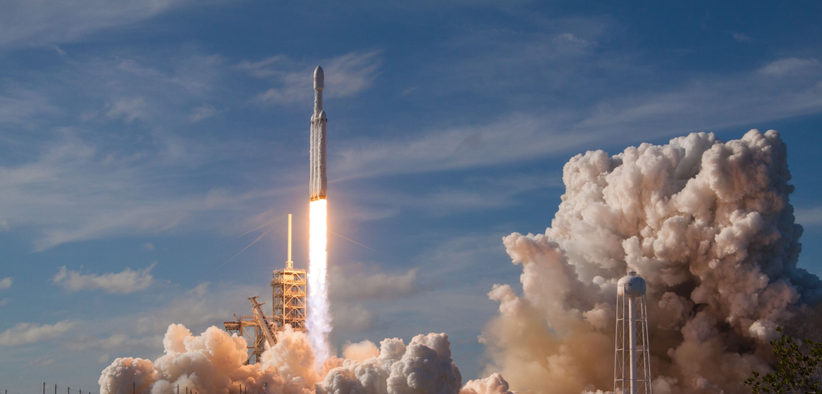
SpaceX launches the Falcon Heavy rocket, the most powerful rocket in history, on February 6 at 3:45 p.m.
And with an earth-shattering roar, the Falcon Heavy blasted off the platform—the very same platform NASA used to transport astronauts to the moon decades ago—and into space, cheers erupting from the spectating crowd. The colossal rocket, designed and built by SpaceX, launched into the sky on February 6 at 3:45 p.m. The company, owned by billionaire innovator Elon Musk, had launched the most powerful rocket system in history, commencing the start of a new Space Age.
This revival of a space program by the Falcon Heavy launch and its adventurous endeavors is showing promise, both in technological terms and economical terms. The number of new successes achieved by the Falcon Heavy launch last week has only scratched the surface of new possibilities for society that may come as a result of progress in the space and satellite industry. Thus, our society must support entrepreneurs like Elon Musk and invest time, trust, and money in the space industry—an industry that holds the key to new, important, and exciting possibilities.
The Falcon Heavy’s innovative and cost-saving design was a huge advancement in the production of rockets in the space industry. In contrast to big and bulkier rockets used in the past by crafts such as the Space Shuttle, the Falcon Heavy uses less bulky and more efficient “Merlin” engines, allowing it to be cost-effective, reliable, and powerful at the same time. By using these engines, the Falcon Heavy can generate the thrust power equal to that of eighteen 747 aircrafts, and it’s able to lift and deliver almost 141,000 pounds of payload into space—a weight 2.7 times larger than the Space Shuttle ever could. This substantially increases the chances of manned missions to Mars in the near future—a huge step toward a voyage that will reap great rewards for the scientific world.
SpaceX’s current price of $90 million per space launch may seem obnoxiously large, but compared to the $300-$400 million that their nearest competitors offer, SpaceX’s price tag seems generously low. This was made possible by the cost-saving specs of the Falcon Heavy. For example, the Falcon Heavy uses guided retro rockets on its main space launchers (used at liftoff) to safely return them to Earth for reuse, rather than discarding their main launchers into the oceans, as previous space crafts did. This effort significantly reduces launch costs and allows SpaceX to inch closer to its goal of affordable, accessible, and sustainable space flight. Previously, almost all significant space missions (such as the Cassini Probe launch and the Hubble Telescope) have been so costly that the government was the only viable option for funding. SpaceX’s innovation opened the doors to multiple low-cost space missions that can be funded by private corporations rather than the government. Many company executives have already entertained the thought of space travel in future expansion of their corporation. With all this advancement also comes significant growth in the American economy — investments banks such as Morgan Stanley and Merrill Lynch have indicated that the space industry will become a multi-trillion-dollar field in just 30 years. As shown by SpaceX’s recent launch, the space industry can create cheap, groundbreaking space missions and new breakthroughs in scientific discovery, all while creating American jobs.
The evidence is clear: Falcon Heavy’s latest test launch has created a pathway for extreme breakthroughs that can massively benefit the scientific community, the global economy, and the human race and society as a whole. SpaceX has shown what they can do with the correct resources—it is now our job to support companies like SpaceX and the space industry as a whole, thereby bringing in significant future profit and innovation.




